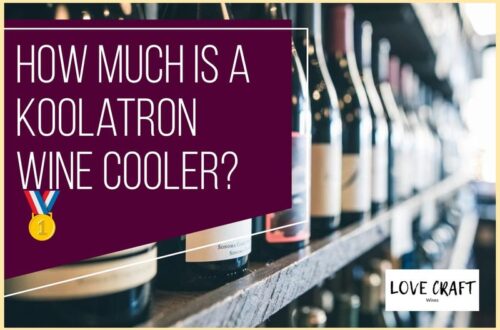Have you ever tasted a wine that made your mouth pucker and your taste buds tingle? That’s the effect of acidity in wine.
Acidity is one of the essential components that give wine its unique character, flavor, and balance. It’s like the backbone of a wine, providing structure and depth to the other elements like tannins, sweetness, and fruitiness.
But what exactly is wine acidity? Is wine considered to be an acidic beverage?
In this article, we’ll explore the world of wine acidity and its role in winemaking and wine tasting. We’ll discuss the various factors that affect acidity levels in wine, the types of wine with high acidity, and how winemakers adjust acidity levels to achieve the desired taste and balance.
So, sit back, pour yourself a glass of your favorite wine, and let’s dive into the fascinating world of wine acidity.
Table of Contents
Understanding Wine Acidity
You’re going to love learning about how the acidity of your favorite drink plays a crucial role in its taste and aroma.
Wine acidity refers to the pH levels of the wine, which range from 2.5 to 4.5. This range is what gives wine its distinctive taste perception, from tangy and tart to smooth and mellow.
Acidity is an important component of wine because it balances out the sweetness, bitterness, and alcohol content. It also affects the overall mouthfeel of the wine, making it feel crisp and refreshing.
Additionally, the level of acidity in wine can influence how well it ages and how well it pairs with food. Understanding wine acidity is key to appreciating the complexity and depth of flavors that wine has to offer.
Now that you have a better understanding of wine acidity, let’s dive into the different factors that can affect it.
Factors Affecting Wine Acidity
The level of tartness in a glass of vino can be influenced by various factors, such as the grape variety, climate impact, and the winemaking process.
Grape varieties that naturally have high levels of acidity include Sauvignon Blanc, Pinot Noir, and Riesling.
Regions with cooler climates also tend to produce wines with higher acidity due to the slower ripening process, which allows the grapes to retain more acidity.
On the other hand, warmer regions tend to produce wines with lower acidity levels.
The winemaking process can also impact the acidity levels of the wine.
For example, malolactic fermentation, a process where malic acid is converted to lactic acid, can lower the acidity level in wine.
Additionally, the use of oak barrels during fermentation can also affect the acidity levels.
Wines that are fermented in oak barrels tend to have lower levels of acidity due to the gradual oxidation process that occurs during the barrel aging.
With this in mind, let’s take a closer look at some types of wine with high acidity.
Types of Wine with High Acidity
If you’re looking for a zesty and refreshing option for your next glass, check out these types of vino with a tangy kick.
Some acidic grape varieties, like Sauvignon Blanc, Riesling, and Pinot Noir, naturally have higher acidity levels. These wines are often described as crisp, bright, and lively on the palate, making them a popular choice for pairing with seafood, salads, and other lighter dishes.
Winemakers can also use various techniques to balance acidity levels in their wines, such as blending grapes with different acid profiles or allowing malolactic fermentation to occur to reduce acidity.
However, some wine enthusiasts prefer the bold and tart flavors found in high acidity wines, which can also enhance the aging potential of certain varietals. So, if you’re looking to add a little zing to your next glass, consider trying out a wine with a high acidity level.
Transitioning into the subsequent section about adjusting acidity levels in winemaking, it’s important to note that winemakers have a variety of tools at their disposal to modify the acidity of their wines.
By adjusting the pH levels through additions of acid or base, or utilizing techniques like cold stabilization or deacidification, winemakers can create a more balanced and harmonious final product.
Let’s dive deeper into these methods and explore how they can impact the flavor profile of a wine.
Adjusting Acidity Levels in Winemaking
You can easily tweak the tanginess of your glass with some winemaking techniques, like adjusting the acidity levels of your wine.
Acidity is a crucial component of winemaking as it affects the overall taste and longevity of the beverage. The pH levels of wine range from 2.8 to 3.8, with lower pH levels indicating higher acidity.
Winemakers can adjust the acidity levels by adding tartaric acid or citric acid to the wine during the winemaking process. They can also use malolactic fermentation, a process that converts harsher malic acid into the softer lactic acid, resulting in a smoother taste.
In addition to adjusting flavor, acidity levels also play a significant role in the preservation of the wine. Higher acidity levels help prevent oxidation and bacterial growth, ensuring the longevity of the wine. Conversely, lower acidity levels can cause the wine to spoil more quickly.
So, the next time you enjoy a glass of wine, remember that the perfect amount of acidity can make all the difference in the taste and preservation of your drink.
The Importance of Acidity in Wine Tasting
Acidity levels are key to experiencing the full range of flavors and aromas that make wine tasting an enjoyable experience. Acidity is a crucial element in wine that helps to balance out the sweetness and tannins, resulting in a more complex and well-rounded flavor profile.
High acidity levels can provide a refreshing and crisp taste, while low acidity levels can result in a dull and flat wine. Moreover, acidity plays a significant role in food pairing and aging potential. Wines with higher acidity levels tend to pair well with rich and fatty foods as the acidity cuts through the richness and cleanses the palate.
Additionally, high acidity levels can help to preserve the wine’s freshness and enhance its aging potential. On the other hand, wines with low acidity levels may not pair well with food and may not age as well as those with higher acidity levels. Therefore, when tasting wine, it’s essential to pay attention to the wine’s acidity levels to fully appreciate its flavor and potential.
Frequently Asked Questions
What is the pH range of acidic wines?
When it comes to wine pH testing, acidity plays a crucial role in the wine’s flavor profile.
The pH range of acidic wines typically falls between 3 and 4, with the most acidic wines having a pH of around 3.
Wines with a higher pH tend to taste less tart and more bitter.
It’s important to note that pH levels in wine can vary depending on factors such as grape variety, climate, and winemaking techniques.
However, understanding the pH range of acidic wines can help wine enthusiasts choose the perfect bottle to complement their meal or satisfy their taste preferences.
Can wine acidity be tested at home?
Want to test the acidity levels of your wine at home? You might be thinking that it’s too complicated or expensive, but it’s actually easier than you think.
Home testing kits are available that can accurately measure the acidity levels of your wine. These kits are affordable and easy to use, making it simple for anyone to test the acidity levels of their wine at home.
Simply follow the instructions provided with the kit and you’ll have your results in no time. Don’t let the fear of complexity or cost stop you from testing the acidity levels of your wine at home.
Are red wines generally more acidic than white wines?
When it comes to acidic wine varietals, red wines are generally more acidic than white wines. This is due to the fact that red wines are made with thicker-skinned grapes, which contain more tannins and acidity.
However, it’s important to note that acidity levels can vary greatly depending on the specific wine and region it comes from.
When pairing acidic wine with food, it’s important to consider the acidity levels of both the wine and the dish. Acidic wine pairings can work well with rich, fatty foods, as the acidity helps to cut through the richness and cleanse the palate.
Some popular acidic wine pairings include Sauvignon Blanc with goat cheese, Pinot Noir with salmon, and Chianti with tomato-based pasta dishes.
Are there any health benefits to drinking acidic wines?
Picture this: you’re at a party and someone hands you a glass of red wine. Your first thought might be about the potential for a headache the next day.
But let’s bust some myths here. While it’s true that acidic wines can cause discomfort for some, there are actually some potential health benefits to drinking them in moderation.
Research suggests that acidic wines may help with digestion, as the acidity can stimulate the production of digestive juices. Additionally, the antioxidants in red wine have been linked to improved heart health.
Of course, as with any beverage, moderation is key. But don’t let the fear of acidity keep you from trying new wines.
Is it possible to reduce the acidity of a wine after it has been bottled?
If you’re looking to reduce the acidity of a wine after it has been bottled, there are a few wine preservation and acidity reduction techniques you can try.
One method is to add calcium carbonate or potassium carbonate to the wine, which can help neutralize the acidity.
Another option is to use a process called malolactic fermentation, which converts the harsher malic acid in the wine into softer lactic acid.
However, it’s important to keep in mind that altering the acidity of a wine can also change its flavor profile, so it’s best to consult with a wine expert before attempting any acidity reduction techniques.
Proper wine preservation techniques, such as storing the wine at the correct temperature and humidity levels, can also help maintain the wine’s acidity over time.
Conclusion
Congratulations! You now have a better understanding of wine acidity. You learned that wine is indeed considered an acidic beverage, and that the level of acidity is influenced by several factors such as grape variety, climate, and winemaking methods.
You also discovered that some types of wine, such as Riesling and Sauvignon Blanc, are known for their high acidity, while others, like Merlot and Syrah, are typically lower in acidity.
Acidity is an important factor in wine tasting, as it affects the taste, mouthfeel, and aging potential of the wine. It provides balance and freshness, and can also enhance the wine’s flavors and aromas.
As a winemaker, you have the ability to adjust the acidity levels of your wine, using techniques such as adding acid or deacidifying. By understanding the role of acidity in wine, you can create a well-balanced and delicious final product.
So, go ahead and enjoy that glass of wine, knowing that its acidity level is an essential component of its taste and quality.







